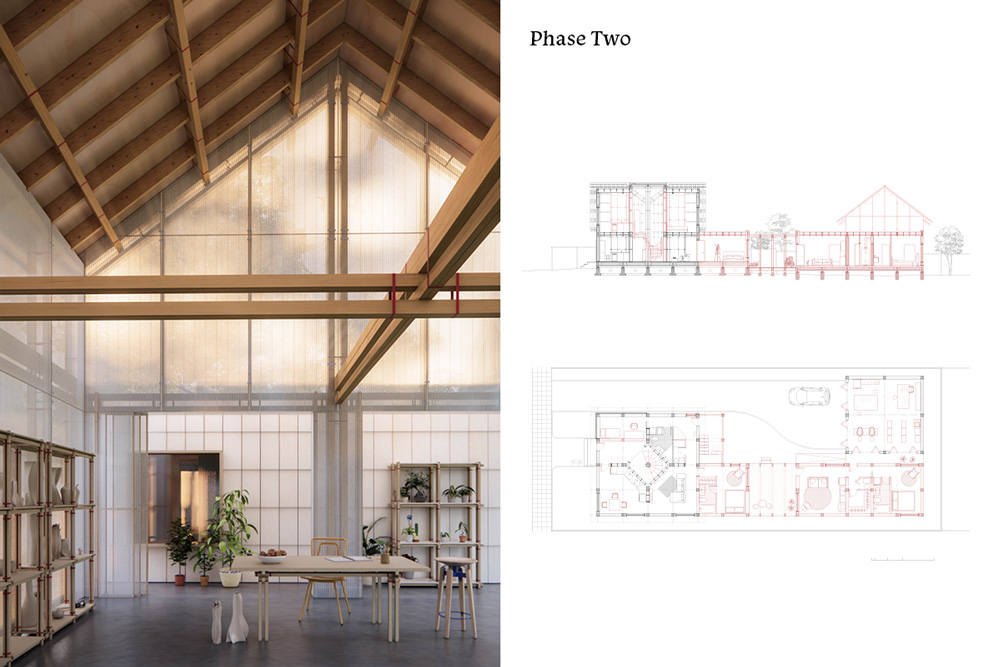How to (Un)build a House? A Reinvention of Wood Framing

by Clara Mu He (MArch I ’24)
In recent decades, as we recognize that our extractive practices are driving humanity toward an imminent environmental crisis, there has been a renewed interest in reusing construction materials. Against the backdrop of a national housing crisis, densification policies, and an anticipated surge in residential construction and demolition—compounded by challenges of lumber shortages and sustainability concerns—there is an imperative to rethink how we build and demolish houses.
The predominant method of housing construction in America today is wood framing, which relies heavily on nails and adhesives. This makes materials difficult to reuse and contributes to environmental pollution due to the disposal of wood from demolitions. To divert wood waste from landfills, this thesis proposes a Design for Disassembly (DfD) wood framing system: the Strapped House. Inspired by traditional bamboo construction in Southeast Asia, this system aims to reinvent wood framing by introducing strapping as a non-intrusive means of assembly, facilitating easier disassembly and maintaining material integrity. The approach recognizes the momentum of our current construction industry and leverages the skill sets of local contractors. Instead of centralized prefabrication of panels or modules, the Strapped House system adopts a bottom-up approach, seamlessly integrating into the current labor market of housing construction and empowering local builders to actively participate in sustainable construction and deconstruction.
To demonstrate the application of the Strapped House system, this thesis proposes a three-phased incremental construction on a newly upzoned residential lot in Mattapan, Boston. The proposal illustrates the possibility of building six units on a previously low-density lot, enabling sustainable urban densification.






